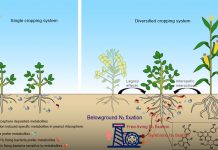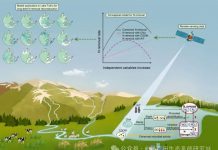Zhang HJ Ding WX Luo JF N. Bolan Yu HY Zhu JG. Temporal responses of microorganisms and native organic carbon mineralization to 13C-glucose addition in a sandy loam soil with long-term fertilization. European Journal of Soil Biology 2016 74: 16-22
Abstract
The altered mineralization rate of soil organic carbon (SOC) in the presence of exogenous organic substrates occurs by stimulating microbial activity. In this study 13C-glucose was applied at a rate of 1000 μg 13C g−1 soil to arable soils following a 20-year application of compost (CM) inorganic NPK fertilizer (NPK) and a no-fertilizer Control. It was incubated for 30 days to evaluate how the labile substrate affected the microbial abundance and native SOC decomposition. Phospholipid fatty acids (PLFAs) were used as biomarkers for bacteria (Gram-positive bacteria Gram-negative bacteria and actinobacteria) and fungi. 13C-glucose application resulted in a significant increase in microbial abundance and positive priming effect for all treatments. The primed CO2 flux derived from native SOC peaked on day 11 then increased gradually again from day 15 onwards in all treatments. The increase of abundance peaked on days 7 and 15 for Gram-negative (G−) bacteria and Gram-positive (G+) bacteria however fungal and actinobacterial PLFAs increased steadily from day 3 onwards under all three fertilization regimes. The results suggest that G+ and G− bacteria make a greater contribution to priming effects during the first 15 days of incubation while fungi and actinobacteria are more important at the latter stages. The difference between glucose-derived 13C remaining in soils and primed CO2 from native SOC was 480 381 and 263 mg C kg−1 in CM NPK and Control treatments respectively. Our study demonstrates that the exogenous labile organic substrate addition can more effectively promote C sequestration in organic C-rich soil (CM) than in organic C-poor soil (NPK or Control).







